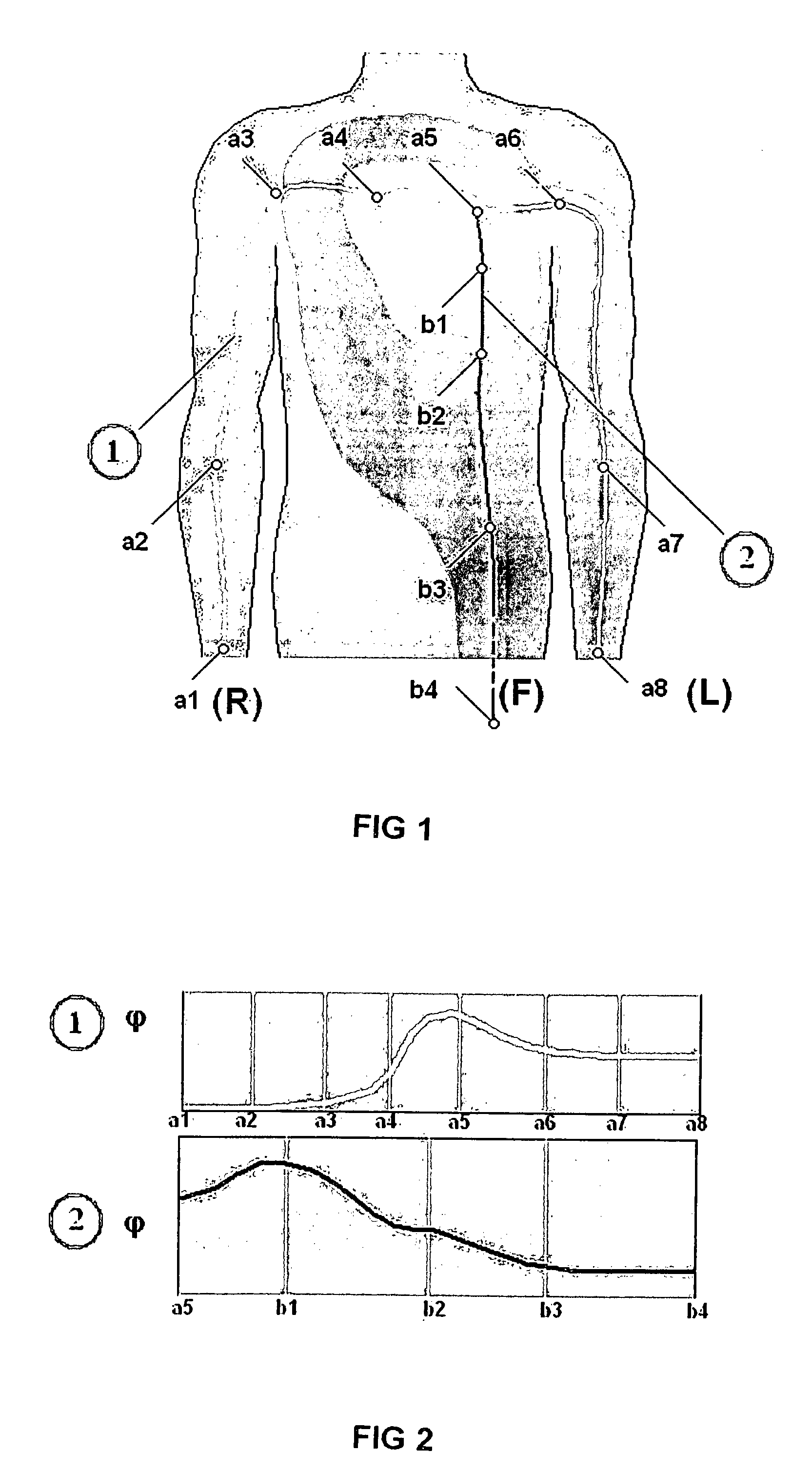Diagnostic method utilizing standard lead ECG signals
a diagnostic method and lead ecg technology, applied in the field of electrocardiography (ecg) analysis, can solve the problems of insufficient sensitivity and specificity of modern ecg analysis, general undesirable, and inability to obtain information from traditional methods of ecg analysis
- Summary
- Abstract
- Description
- Claims
- Application Information
AI Technical Summary
Benefits of technology
Problems solved by technology
Method used
Image
Examples
Embodiment Construction
[0052]The present invention provides a new and unique strategy for ECG analysis based upon only 4 electrodes placed on a subject's body. The 4 electrodes are placed on the arms and legs of a subject, and correspond to the limb electrodes used in a 6 lead system or a 12 lead system. The invention enables the construction of highly sensitive three-dimensional anatomic maps of a heart on a display screen with standard ECG leads. The constructed model can utilize a discoloration of an epicardium on the map to indicate not only the existence of a pathological state, but also indicate the location of centers of change of a myocardium at the earliest stages of a pathological state. The present invention also provides systems and computer-readable media for performing the noted strategies.
[0053]The present invention utilizes electrical voltages or signals of new leads, referred to herein as “additional leads.” The voltages or signals of additional leads can be obtained at any moment by regi...
PUM
 Login to View More
Login to View More Abstract
Description
Claims
Application Information
 Login to View More
Login to View More - R&D
- Intellectual Property
- Life Sciences
- Materials
- Tech Scout
- Unparalleled Data Quality
- Higher Quality Content
- 60% Fewer Hallucinations
Browse by: Latest US Patents, China's latest patents, Technical Efficacy Thesaurus, Application Domain, Technology Topic, Popular Technical Reports.
© 2025 PatSnap. All rights reserved.Legal|Privacy policy|Modern Slavery Act Transparency Statement|Sitemap|About US| Contact US: help@patsnap.com



